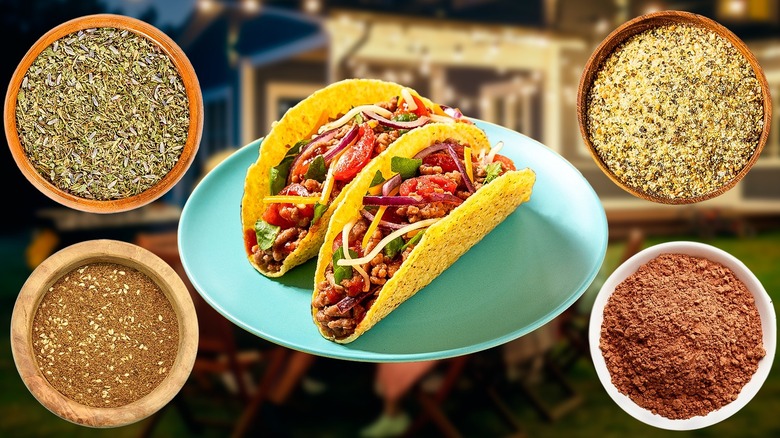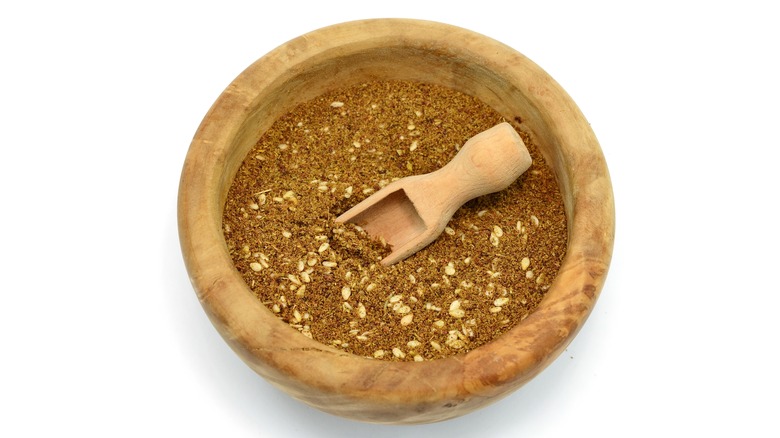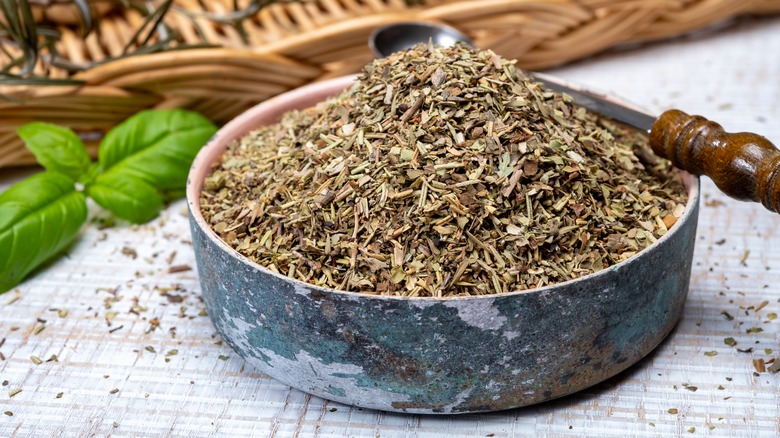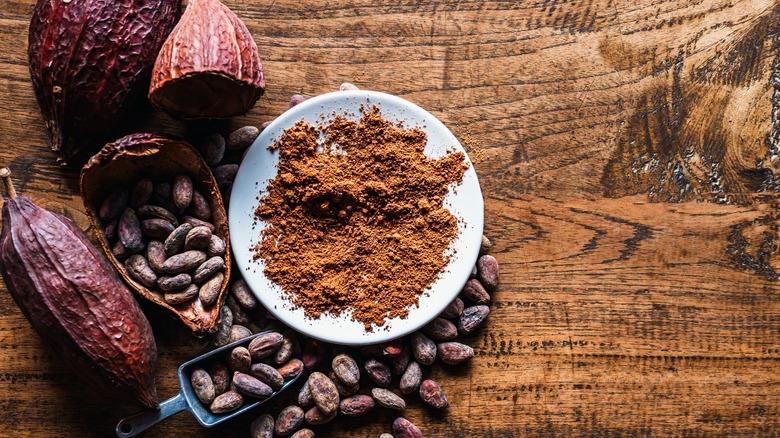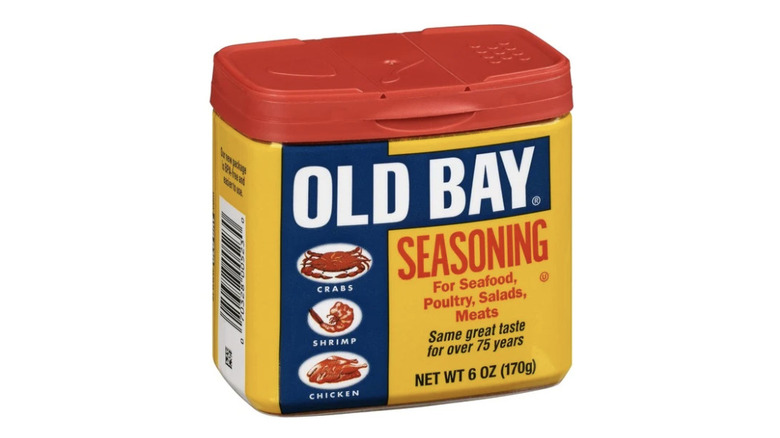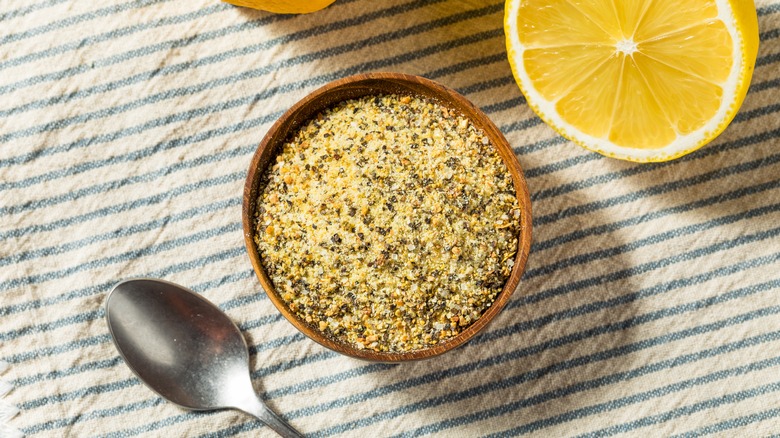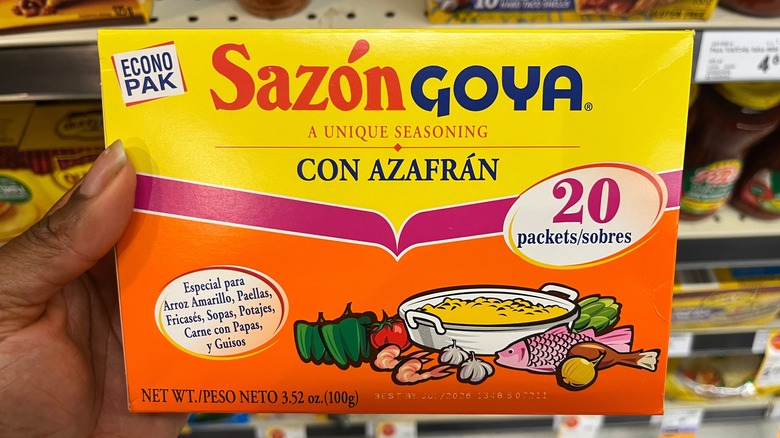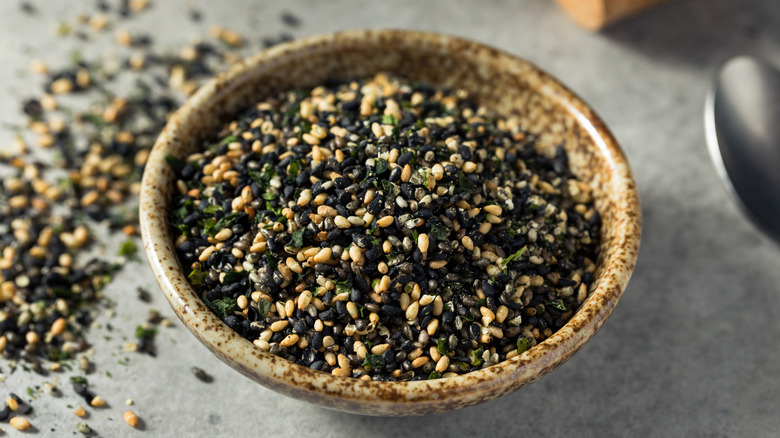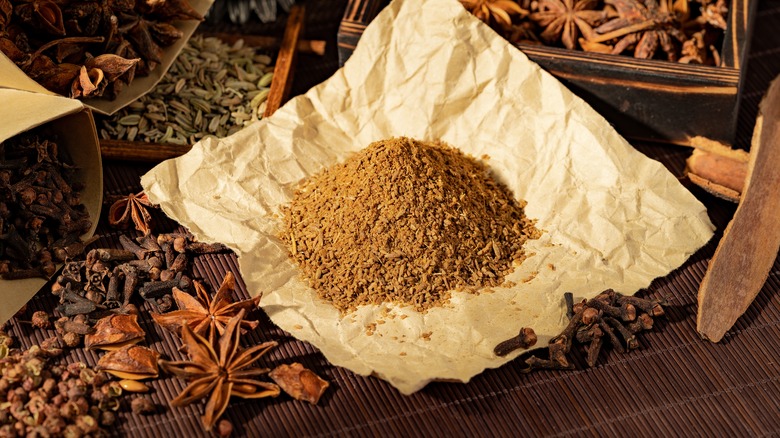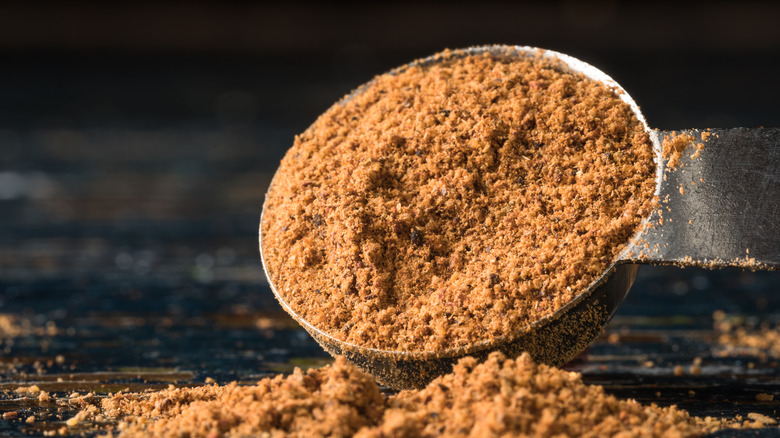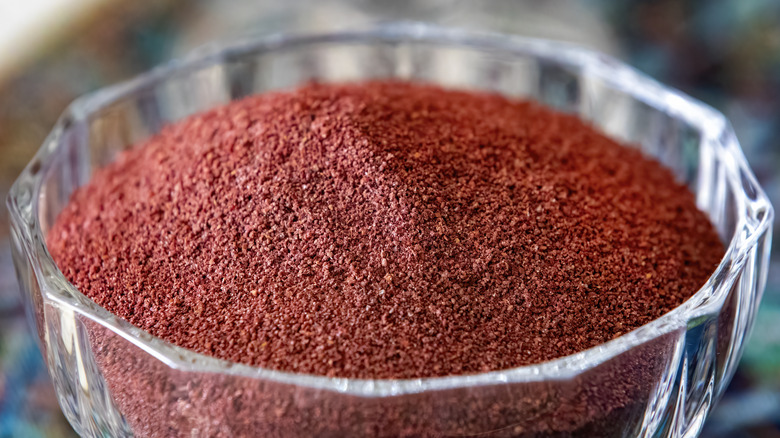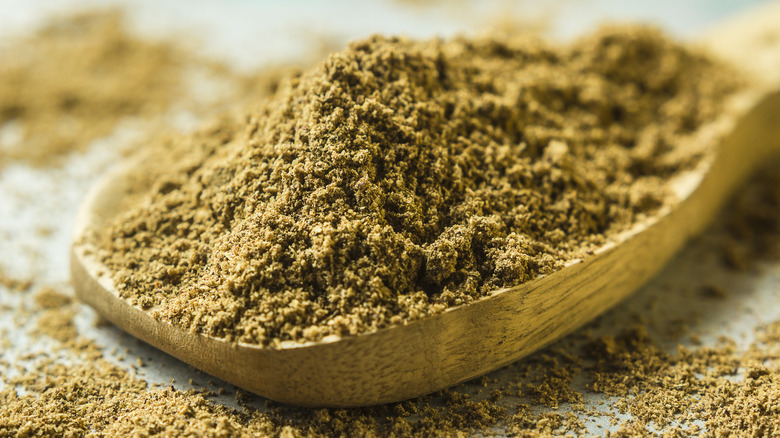12 Unexpected Seasonings To Upgrade Your Taco Night
We may receive a commission on purchases made from links.
If the word "perfect" had a picture of a taco next to it in the dictionary, everyone would understand why. Simple, savory, and infinitely customizable, they have an entire day of the week dedicated to them for a reason. Any night is a perfect one for tacos, though. Beyond budget-friendly and stomach-filling, they only require a few ingredients, are easy to make, can feed the whole family, and most importantly, are delicious.
That's likely how taco night became an American tradition. It's an opportunity to experiment with new flavors without spending lots of money and hours in the kitchen. Taco seasoning, while classic, is only one of many ways to upgrade your taco night. With the help of Anthony Evan, food and beverage specialist of Culinary Club and owner of Veggie Fam in Los Angeles, we put together a list of unexpected taco seasonings sure to elevate your favorite night of the week. We're here to inspire you to give the go-to a rest and step into the culinary unknown.
Za'atar
Za'atar is one of those seasonings that instantly becomes a favorite. It's an ancient herb blend of raw sesame seeds, sumac, marjoram, dried oregano, dried thyme, and coarse salt originating from the SWANA region located between North Africa and Southwest Asia. Think of za'atar as the Middle Eastern version of Italian seasoning, except with the toasted nutty taste of sesame seeds and citrusy tinge of sumac. The flavor profile is more complex and traditionally used as an all-purpose seasoning for meats, veggies, labneh, and on man'oushe (flatbread).
This is the versatile seasoning that you didn't know your taco needed. Uniquely Middle Eastern, there's an aromatic savoriness to it that brings out the full flavor of meats and veggies. "I've used it primarily on chicken tacos. The sumac in za'atar gives a slight tang that really complements grilled meats. It's especially good with roasted veggies like cauliflower or eggplant on tacos," said Anthony Evan. Za'atar is widely available at most grocery stores and online as well. You can easily make homemade za'atar, too.
Brown sugar
Something magical happens when you pair brown sugar and steak. It's a sweet and nutty counterpart to savoriness that adds a crispy caramelized char. This unexpected seasoning can also give taco meat more depth of flavor. "Adding brown sugar to a taco seasoning mix works wonders with smoked paprika. I use this combo when doing pork tacos, and the sugar helps balance out the spice, while also aiding in caramelization," says Anthony Evan.
Around a ½ teaspoon of brown sugar per blend is usually fine. It complements spices like cumin and black pepper, along with citrusy flavors like lime and apple cider vinegar-based marinades. Next time taco night rolls around, add a bit of brown sweetness to homemade taco seasoning, you'll love how it subtley pops through adding sugary complexity. Keep in mind that not all brown sugars will work the same. Bags labeled as "light" or "soft" brown sugar should get the nod over varieties like turbinado and demerara. The former have fine, silky particle sizes that blend well with other taco seasonings, while the latter have coarse grains that might add an undesirable crunch to your taco seasoning.
Herbes de Provence
Herbes de Provence translates to "mixed herbs," and comes from a region in France named Provence. It's a staple seasoning of French Provençal cuisine made with basil, fennel seed, marjoram, mint, oregano, rosemary, savory, tarragon, thyme, and sometimes bay leaf and lavender. This all-purpose herbaceous blend is similar to za'atar and Italian seasoning yet has a distinctive black licorice-like flavor with a subtle spiciness, which comes from savory, an ancient herb of the mint family that tastes like peppery thyme. Herbes de Provence is traditionally used to season roasted chicken, lamb, veggies, and grilled fish.
Put a French-flavored spin on taco night with Herbes de Provence. If you enjoy roasted chicken tacos, this unexpected seasoning will definitely have everyone saying, "C'est délicieux." As Evans points out, herbes de Provence has plenty of nuanced, minute flavors that go just as well with seafood tacos, too. "The lavender (in some versions) adds a slight floral note, making it a unique addition," says Evan. It's widely available at most grocery stores and super easy to make at home. Different brands include varying ingredients so make sure to check before purchasing.
Cocoa powder
This next unexpected taco seasoning might become one of your favorite go-tos. Cocoa powder may seem like an unlikely pairing for meats but it's actually the best type of chocolate for steaks, providing a subtle woodsy, noticeably nutty, roasted taste. The delicate notes of cocoa pairs well with cumin, chili powder, and piquant flavors in general, bringing out an aromatic smokiness. "I've used cocoa powder with barbacoa tacos, and it adds a lovely richness," shares Anthony Evans, "especially when paired with a chipotle or adobo sauce. It's unexpected but brings out the savory flavors.".
Cocoa powder-infused strips of slow-cooked beef wrapped lovingly in a corn tortilla is just what your taco night ordered. We recommend using around two teaspoons of this baking staple in your taco seasoning blend and adjusting it according to your palate. In terms of which type of cocoa powder to use, consider Dutch-processed (or cocoa powder without a "natural process" label). Dutch-processed cocoa is washed, meaning it has less acidity, which makes a friendly pairing with other spices. We're pretty confident that it'll be a crowd-pleaser on your next taco night.
Old Bay seasoning
Old Bay is known as one of the best crustacean seasonings around but can be used for all sorts of crave-worthy foods. This salty and smokey flavor-provider is made with paprika, cayenne pepper, black pepper, salt, dry mustard, allspice, cardamom, cinnamon, ground cloves, powdered ginger, and nutmeg. Old Bay has a complex profile with aromatic, sweet, and spicy notes. If you love seafood boils, grilled shrimp and salmon, and lobster tails, you'll enjoy this unexpected seasoning on all types of fish tacos.
"Old Bay is perfect for shrimp tacos. The slightly spicy, aromatic mix is great for seafood and pairs well with a creamy or citrus-based taco sauce," Anthony Evan says. Odds are most of you already have a container of Old Bay in the cabinet already. If not, you can also put your blendmaster hat on and make an at-home riff on Old Bay seasoning, from scratch.
Lemon pepper
This unexpected taco seasoning is a one-way ticket to flavortown. Zestful with a savory kick, lemon pepper combines three classic ingredients: lemon zest, black pepper, and salt. Garlic powder, onion powder, and red chile flakes are sometimes included too. From poultry and seafood to pasta and veggies, the citrusy blend of lemon pepper has many delicious uses, which makes it an unexpected pairing for tacos. Lemon pepper chicken wings are perhaps the most popular, a flavor many consider superior to the iconic buffalo wings. Whichever wing style you prefer, that's clear evidence of how tasty this all-purpose seasoning is.
It's also evidence that lemon pepper is an unexpected seasoning to upgrade your taco night. Adding this zestful flavor booster to chicken tacos is a no-brainer, and if you make them "wet" with a drizzle of buffalo sauce? It's a chef's kiss. Anthony Evan, on the other hand, has another tasty suggestion, "Lemon pepper is my go-to for fish tacos, especially if you're working with something like tilapia or cod. The citrus really brightens up the dish and pairs well with a simple slaw for contrast." Whichever protein you prefer, lemon pepper seasoning is a must-have for taco night.
Sazón
Puerto Rico may not have invented tacos, but it did invent Sazón, an unexpected taco seasoning that might inspire you to make taco night every night. Savory and herbaceous with garlicky notes, sazón is made with culantro (a Caribbean herb with a taste resembling cilantro), achiote paste, garlic powder, onion powder, black pepper, cumin, and salt. A combination of flavors clearly made for amping up taco night. And fortunately, the popular Hispanic brand Goya makes a tasty sazón so you don't have to pull out your mortar and pestle.
"Sazón Goya brings a vibrant, earthy flavor to ground beef or chicken tacos," says Anthony Evans. "It's ideal for making quick weeknight tacos with a lot of punch in a short amount of time." Try it with this smoked chicken taco recipe, the rich tanginess blends great with refreshing avocado crema. Although Goya is perhaps the most popular maker of sazón, it isn't the only brand, so be sure to double check what your seasoning packet contains before mixing it with your protein.
Furikake
According to Anthony Evan, this list wouldn't be complete without furikake. "A Japanese seasoning blend that includes sesame seeds, seaweed, and dried fish flakes. It adds a salty, umami hit that pairs especially well with fish or shrimp tacos," he says. There are many varieties of this unexpected taco seasoning; alternative versions of furikake include ingredients like shiso leaf, shiitake mushroom powder, dried yuzu peel, wasabi, and miso powder. If you enjoy a toasted and salted fish flavor, you'll love this classic Japanese go-to.
The combination of the various ingredients makes furikake surprisingly versatile. Beyond Japanese staples like ramen and onigiri (rice balls), use it as a garnish for fish or to elevate roasted vegetables. Your cauliflower tacos are just begging for an umami-rich infusion of furikake. Next time you buy fish for taco night, make sure to grab this unexpected seasoning too.
Chinese five-spice powder
With a name like Chinese five-spice powder, your tacos are bound to be five times as delicious. Originally intended to help balance your yin and yang, this unexpected seasoning combines cinnamon, cloves, fennel seeds, star anise, and Sichuan peppercorns — though, like others on this list, variations exist. If you're into blends with pronounced aromatics, Chinese five-spice powder is a truly sensory experience. Its salty, sweet, and sour taste is made complete with a delicious dose of umami.
"I've used Chinese five-spice for pork belly tacos, and it's a game-changer. The warm spices work well with slow-cooked or braised meats, adding depth and complexity," says Anthony Evans. Swapping traditional taco seasoning with Chinese five-spice powder will take braised pork tacos to new flavorful heights. Or, if you have a few hours on hand, try it with this slow-cooker pork recipe. We've no doubt it will be a taco night to remember.
Jerk seasoning
Steer clear of the kitchen if you can't take the heat of this unexpected taco seasoning. A staple of Jamaican cuisine, jerk seasoning is a piquant blend of things you'll usually find in taco seasoning: dried thyme, onion powder, garlic powder, black pepper, sea salt, hot chili powder, and paprika, for example. But, it also contains warming spices like ginger and nutmeg, brown sugar, allspice, and even bay leaves. The word "jerk" refers to how proteins in Jamaica are seasoned, smoked, and grilled. In Jamaica, it comes in seasoning and sauce form, both of which are used to make mouthwatering (or mouth-burning) meat, seafood, and veggie dishes. As such, you can either season the body of your taco with jerk, or top it with jerk sauce when all is said and done.
"Jerk seasoning is incredible with grilled chicken or shrimp tacos. The heat and the bold, earthy flavors from the allspice and thyme shine when paired with a mango salsa or lime crema," Anthony Evan adds. Though not for the faint of tongue, there are milder versions of the blend. Spice up your taco night with this Jamaican beef and mango tacos recipe.
Sumac
The Middle East is home to all sorts of unique flavors with taco night potential. Sumac is a tart-tasting berry that hails from the region (or from Spain, as some claim). It's typically dried and consumed ground, though sometimes whole, giving dishes a pop of citrusy tang with a touch of sweetness and a floral aftertaste. The sourness isn't as pronounced as lemon juice, though; sumac is lighter and also has subtle smokey, earthy notes. "This tart and citrusy spice is excellent on grilled meats or vegetables. It's similar to za'atar but more concentrated, and works well on lamb or beef tacos for a zesty kick," Anthony Evan says.
Like turmeric, sumac dyes foods a pinkish-red color, which adds visual appeal and can give your tacos a similar color to what paprika imparts. It's also a common ingredient used in za'atar, the amazing blend also featured on this list. Transform this grilled cauliflower with tahini and sumac recipe into mouth-watering handheld treats. If you're looking for a meatier introduction to this unexpected taco seasoning, use it as a garnish on chicken tacos, barbacoa lamb, and more. Sumac is available at most grocery stores.
Garam masala
Put an Indian-style twist on your taco night with this centuries-old seasoning. Garam masala is a complex, full-bodied blend of aromatic perfection. It combines black pepper, sugar, salt, tamarind pulp, curry leaves, garlic, serrano chile, ginger, onion, soy sauce, and distilled vinegar. If you've tasted classic Indian dishes like chicken tikka masala, aloo gobi, and chana masala, then imagine the flavorful potential of garam masala-seasoned tacos.
"I've worked with masala in a flank steak taco. The tamarind and serrano chile bring a sweet and spicy profile that cuts through the richness of the meat. It's also excellent with lamb if you're feeling adventurous," Evans tells us. Along with Indian flank steak tacos, garam masala pairs perfectly with chicken, potatoes, and cauliflower, which is great for plant-based people. And, the best part? You can easily make this garam masala from scratch with common pantry ingredients in as little as 5 minutes.
